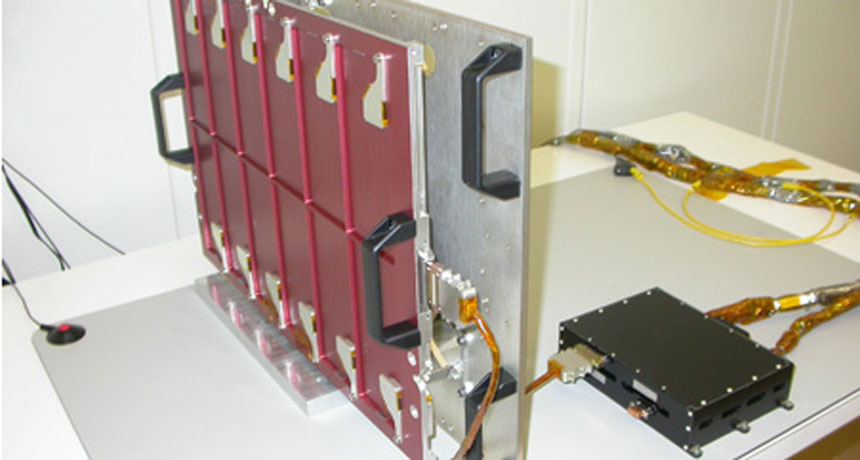Students sent instrument to Pluto
They named their dust counter for the child who came up with Pluto’s name

This is what the dust-measuring instrument looked like before it was installed on the New Horizons spacecraft in August 2004.
NASA/JHUAPL/SWRI
The New Horizons spacecraft is hauling the first student-built instrument on a planetary mission. Called the Venetia Burney Student Dust Counter, its job is to record impacts from space dust. Students at the University of Colorado, in Boulder, designed the device. And they named it for the 11-year-old girl who in 1930 suggested that Pluto would be a good name for the newfound ninth “planet.”

Unlike all the other cameras and instruments on the New Horizons craft, the dust counter has been busy since shortly after launch. It’s been collecting data from across the entire solar system. The dust counter also will probably be the last to shut down, long after New Horizons has passed beyond the Kuiper belt. “Everything will work for decades to come,” says Horányi. Or at least as long as the power (and funding) lasts.
New Horizons got a useful instrument from the Boulder students, he says. But space science also got a cadre of researchers eager to keep exploring. “I’m very proud of these students,” says Horányi. “Their careers are just beautiful to watch.”
By the way, those students were held to the same high standards as everyone else providing instruments for the Pluto-bound mission. Horányi says his students had to “jump through exactly the same hoops.” And after routinely impressing the NASA review boards, he notes, the students’ dust counter was the first instrument to show up at the mother ship.
Power Words
(for more about Power Words, click here)
astronomy The area of science that deals with celestial objects, space and the physical universe as a whole. People who work in this field are called astronomers.
debris Scattered fragments, typically of trash or of something that has been destroyed. Space debris, for instance, includes the wreckage of defunct satellites and spacecraft.
dwarf planet One of the solar system’s small celestial objects. Like a true planet, it orbits the sun. However, dwarf planets are too small to qualify as true planets. Prime examples of these objects: Pluto and Ceres.
engineer A person who uses science to solve problems. As a verb, to engineer means to design a device, material or process that will solve some problem or unmet need.
Kuiper belt An area of the solar system beyond the orbit of Neptune. It is a vast area containing leftovers from the formation of the solar system that continue to orbit the sun. Many objects in the Kuiper belt are made of ice, rock, frozen methane and ammonia.
orbit The curved path of a celestial object or spacecraft around a star, planet or moon. One complete circuit around a celestial body.
Pluto A dwarf planet that is located in the Kuiper Belt, just beyond Neptune. Pluto is the tenth largest object orbiting the sun.
solar system The eight major planets and their moons in orbit around the sun, together with smaller bodies in the form of dwarf planets, asteroids, meteoroids and comets.







